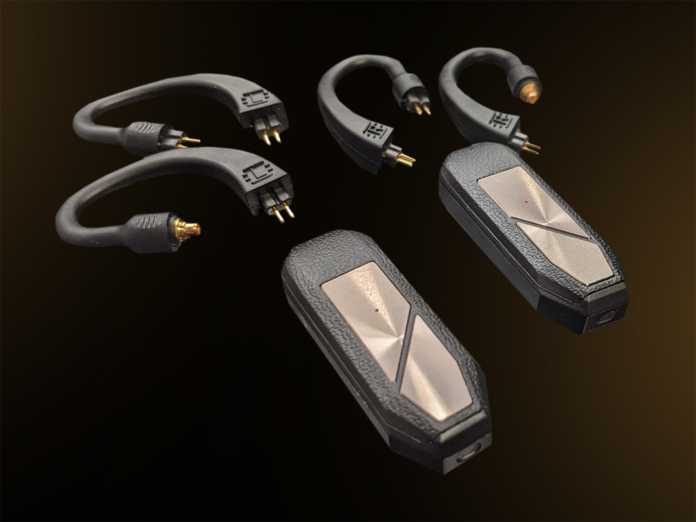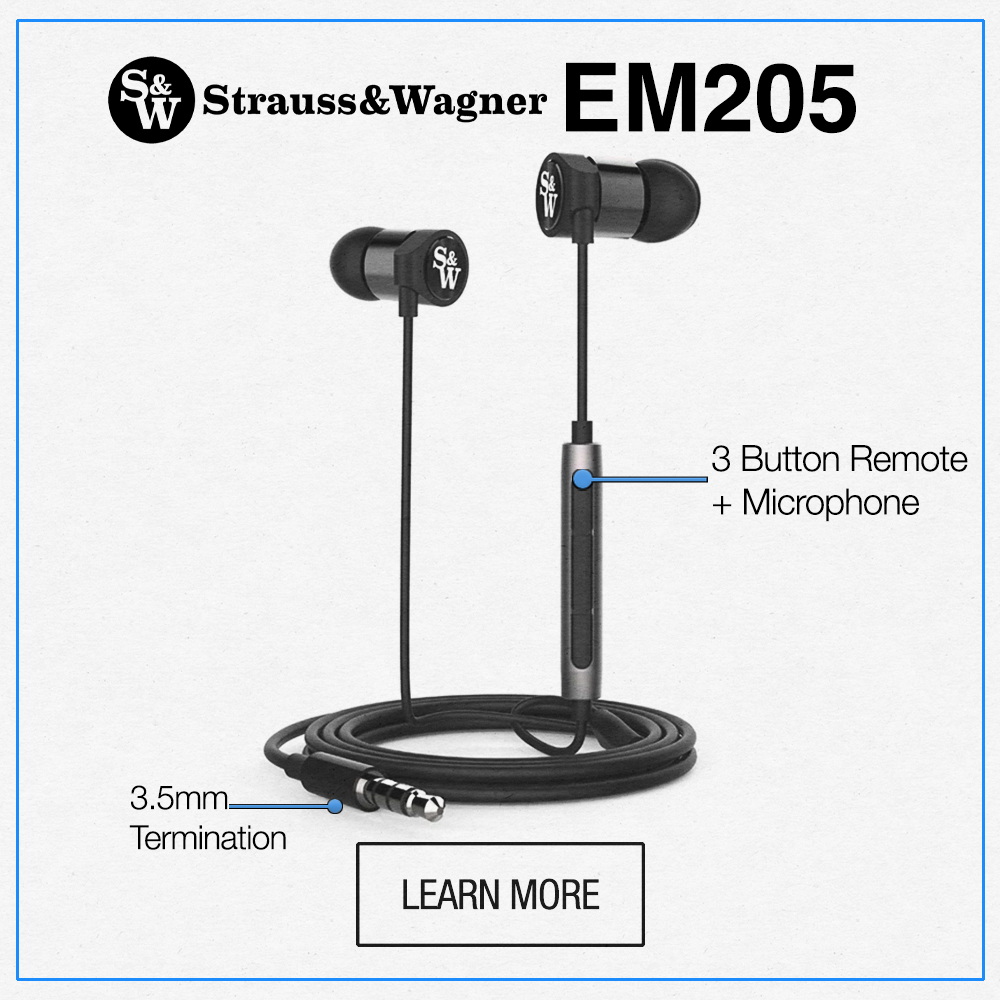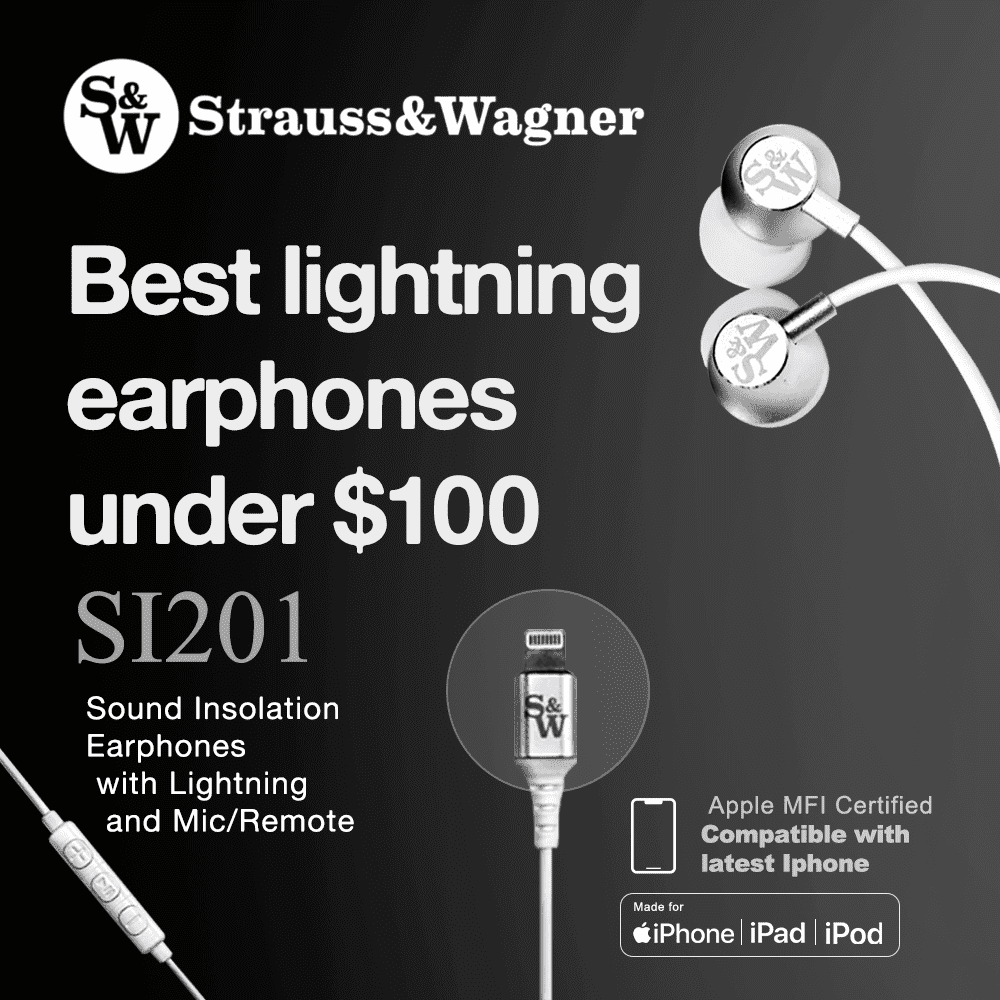ifi GO Pod
We have a fresh wireless adapter release from ifi to go over today: the GO Pod. Seeing its $400 price tag has me wondering: what is it offering that you can’t get in FiiO’s UTWS5, going for a fraction of the price at $140? Both units are designed to bring a wireless experience to your favorite pairs of otherwise wired IEMs. Let’s take a look at the ifi GO Pod’s design, its premium features, and address the question at hand for a lot of readers: should you get the UTWS5 or the GO Pods?
What’s In The Box
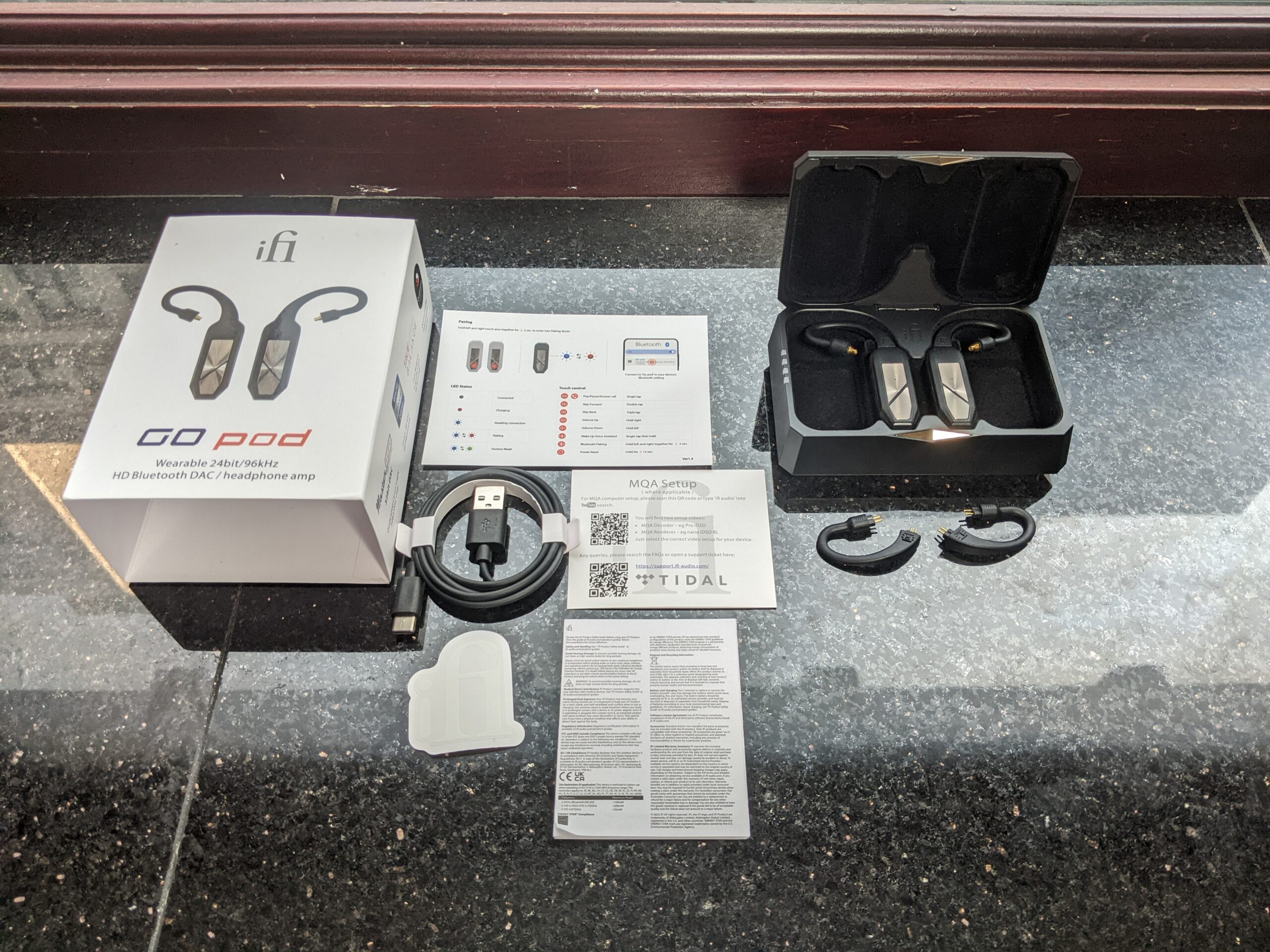
- ifi GO Pod wireless adapters
- Charging case
- USB to USBC charging cable
- MMCX Connectors
- .78mm 2 Pin Connectors
- Guide
Look and Feel
The GO Pods themselves are just slightly larger than the UTWS5 from FiiO, but the charging case is significantly larger than the one that comes with the UTWS5. It’s a bit too bulky for me to truly call it pocket sized, but will fit easily in a small bag. In terms of fit, I found the GO Pods very comfortable. The connection stems wrap around the ear and structurally serve as ear hooks, positioning my IEMs (ThieAudio Oracle MKII) in a way that seemed to line the nozzle up with my ear canals – something I frequently struggle with when I’m going wired.
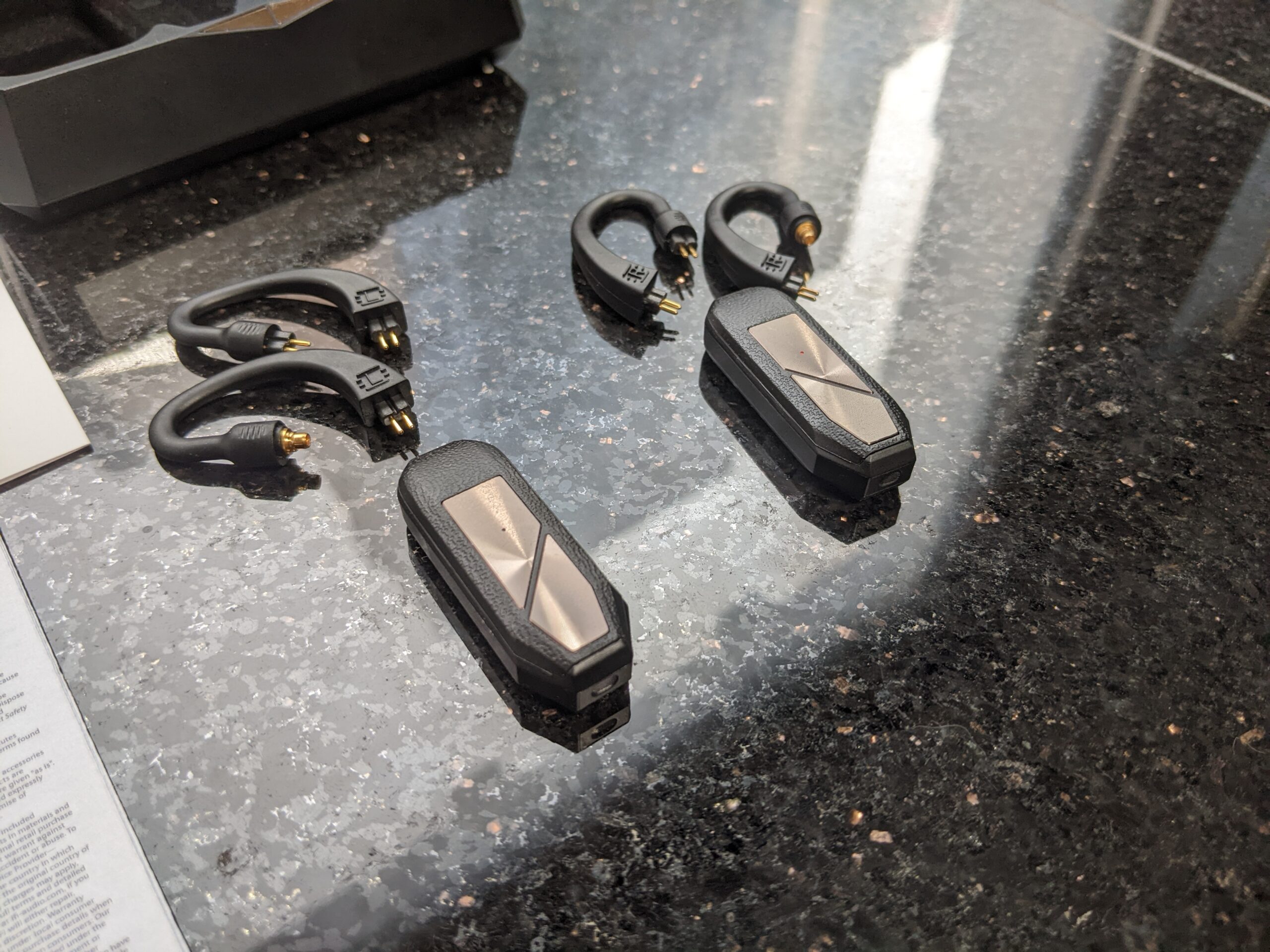
Though larger than the UTWS5, I find they offer a little more comfort as they offer greater support around my ears. But overall, not a huge difference is emerging between the two – yet.
Technical Design
The highlight of the GO Pod’s technical abilities is it’s use of the LDAC codec, allowing it to receive 96 kHz / 24 bit audio. It uses a QCC5144 chipset, making it compatible with Snapdragon and Qualcomm High Speed. We also see 4 different digital filters, automatic impedance matching, and a built in, fully balanced amplifier.
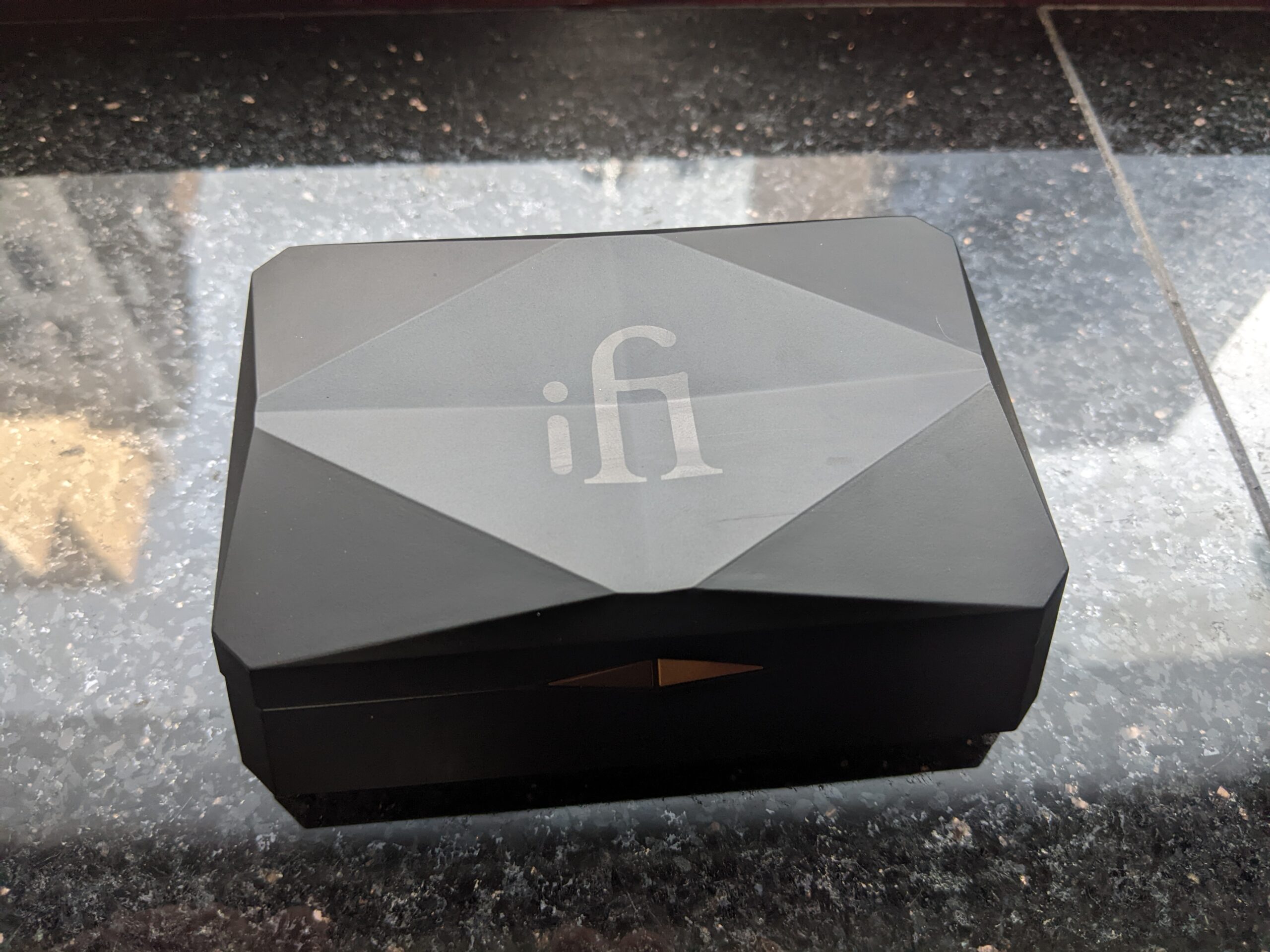
A major appeal of ifi’s GO Pod is the compatibility it offers with MMCX and .78mm 2 Pin IEM connections alike. While FiiO’s UTWS5 came in either MMCX or 2 Pin, the GO Pod features interchangeable stems of both varieties. The process of changing the between the two types of connectors is quick and easy, and offers a lot of convenience and value for those with an IEM collection that they want to take wireless.
Connectivity
This part is easy: the ifi GO Pods have excellent connection strength with their use of Bluetooth 5.2. When walking in a straight line away from my phone that was transmitting music to the GO Pods, I was able to clear about 60 feet of space without a cut out. It was only when I turned corners into another room at this distance that I could force a drop from it. When walking into a different room that was 20 feet away from my phone and shutting the door, the connection stayed perfectly in tact. When taking them outdoors on a busy midtown street in Midtown Manhattan, likely with tons of potential electrical interferences swirling in the air, I only experienced one very brief cut out in the left ear that fixed itself nearly immediately.
Sound Impressions
I’m happy to say that the GO Pods prove their price tag in sound quality above all else. Most notably, sound stages a more or less perfectly preserved, even truly enormous ones like the one heard on Noble Audio’s Ronin. Overall, the sound is a testament to how far wireless audio has come, leaving balances colorful and articulated, virtually indistinguishable from how any of the IEMs listened with would sound with a wired connection. None of the wireless compression, dulling, or general “flatness” is present. One thing that I did notice was that the GO Pods seem to have the propensity to subtly brighten sound signatures. This mild treble boost seemed most prevalent in the highest frequencies, rather than in the mid treble. Tonal qualities are largely unaffected: distorted guitars aren’t at risk of sounding peaky for example. But timbre seemed to be the main vessel in which this sound character popped out: acoustic guitars had a little more percussive scratch to them, and a little extra rasp was brought out of feminine singers with airy voices. These changes weren’t particularly forward, but listeners will likely notice it over the period of a longer listen.
Direct Comparison to the UTWS5
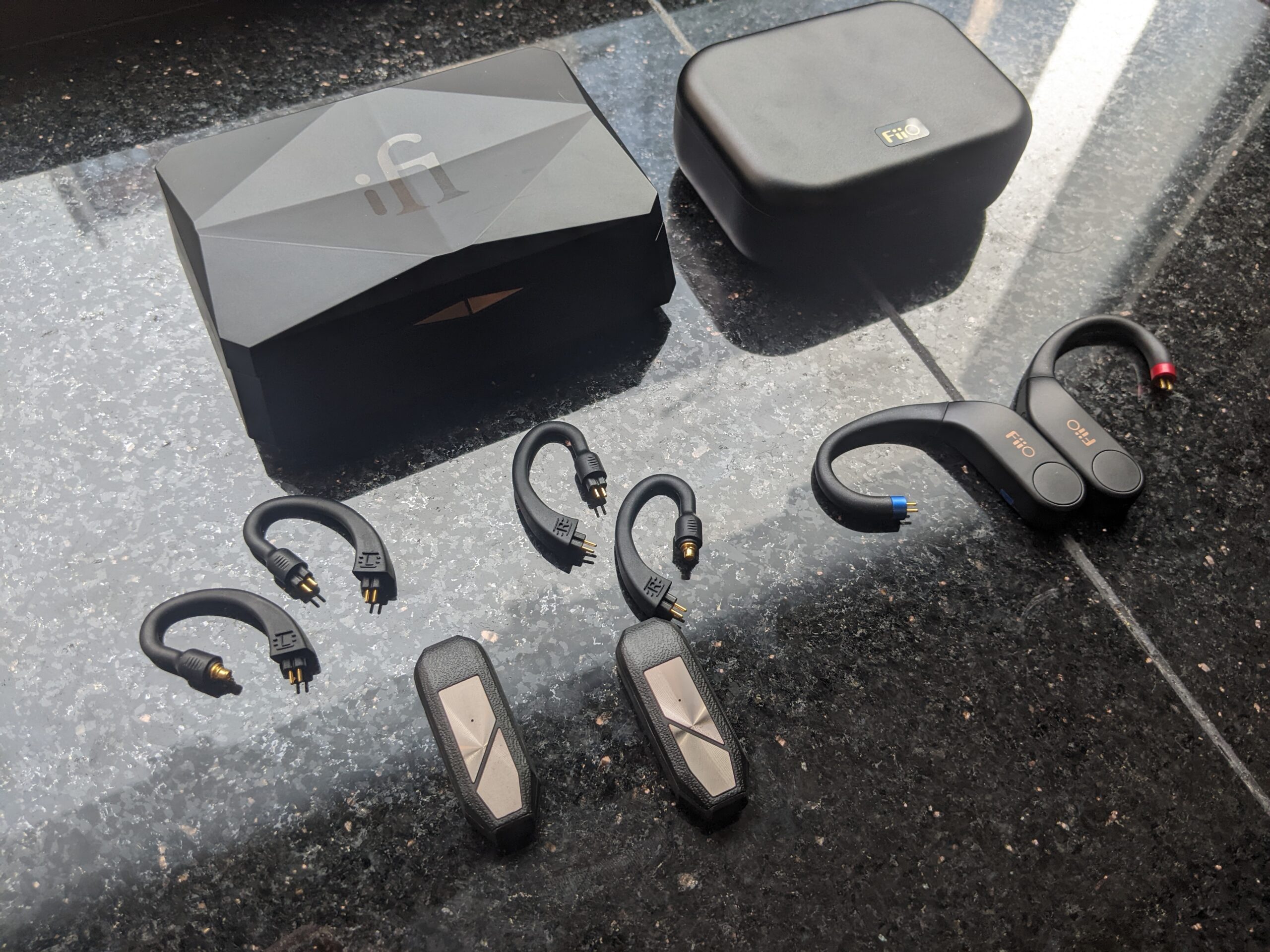
So, you want to take your IEMs wireless, but can’t decide between the FiiO UTWS5 and the ifi Go Pods. Let’s start by listing the main extras you’re getting with the GO Pods that don’t come with the UTWS5
-2 pin and MMCX interchangeable compatibility
-LDAC Codec, allowing for 96 kHz/24 bit audio
-4 digital filters
And lastly, in my opinion, better sound quality, regardless of weather or not you’re listening to 96kHz/24 bit audio files via LDAC. The UTWS nonetheless sounds pretty great, and offers a high value with it $140 price tag, but still has some of the classic wireless audio staples lightly present: slightly narrower stage, and little more compression and a little less color; just a general dulling of whatever IEM you’re listening with. However, I still think it’s well worth it for people who own 200-$300 IEMs, as the sound quality will nonetheless prove better than most wireless buds.
But if you own higher end IEMs that you want to make your wireless pair, the GO Pods are definitely a worthy accessory to consider over the UTWS5. They preserve the finer details of audiophile oriented signatures, and offer the specs that will likely appeal to the $1000-and-up IEM crowd.
Overall
I have to say I was a little skeptical going into the ifi GO Pods, specifically for their $400 price tag vs. the UTWS5’s price tag. But wrapping things up now, I have to admit, they really are offering a lot more. I think they offer a similar price-to-value appeal as FiiO’s UTWS5, and the two will simply stand as the budget vs. premium option on the wireless adapter market. So, if you’re enjoying your Ronin or Odin or whatever else but want to take it wireless, the GO Pods could very well be an accessory worth your investment.
You can order the ifi GO Pod here from Audio46.
Compare the ranking of various headphones, earbuds and in-ear monitors using our tools.
Discuss this, and much more, over on our forum.
---MAJORHIFI may receive commissions from retail offers.


